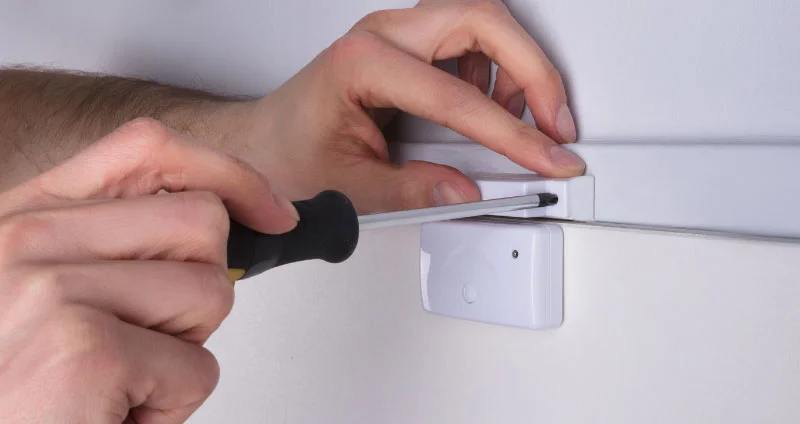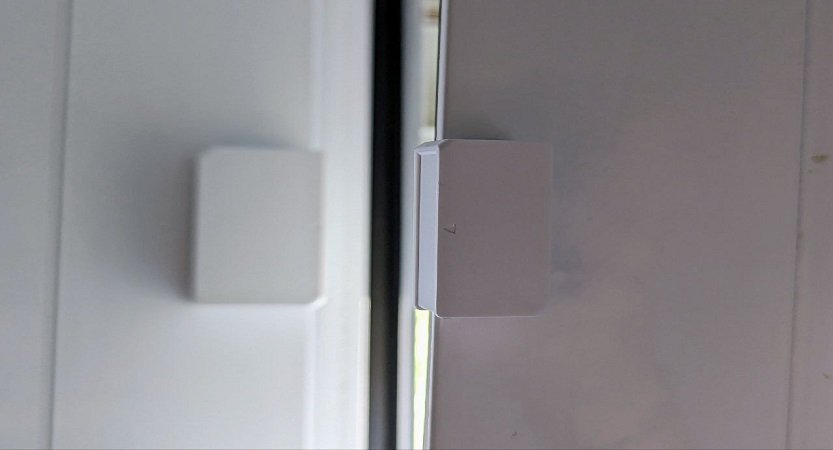Advances in technology have made it possible to improve security in our homes in innovative ways. One of these solutions are door and window sensors, a device that offers additional protection and peace of mind by detecting any intrusion attempt. In this article, we will explore the features, benefits and operation of these sensors, as well as their importance in keeping your home safe. We will also leave you with some examples of what I consider to be the best value for money and you can install them yourself as soon as you receive them.
Let’s start with the article!
What is a door and window sensor?
A door and window sensor is an electronic device that detects any opening or closing of doors and windows in your home. These sensors are equipped with technology that allows them to identify changes in the state of doors and windows and send an alert signal when an anomaly occurs. While it can be used in other ways to detect similar openings, these were created for the above home security application.
How does a door and window sensor work?
The operation of a door and window sensor is quite simple. These devices consist of two parts: a magnet and a detector. The magnet is placed on the door or window, while the detector is installed in the frame. When the door or window is opened or closed, there is a change in the relative position of the magnet and the detector, which activates the sensor and sends an alert signal.

Types of door and window sensors
There are several types of door and window sensors, each with particular characteristics and functionalities. Here are the most common ones:
-
Magnetic sensor
The magnetic sensor is the most common type of door and window sensor. It consists of a magnet and a magnetic switch. When the door or window is opened, the magnet moves away from the switch, interrupting the circuit and activating the sensor.
-
Pressure sensor
The pressure sensor is installed on the inside of the door or window frame. It detects changes in the pressure exerted on the sensor when the door or window is opened or closed.
-
Ultrasonic sensor
Ultrasonic sensors use high-frequency sound waves to detect the presence of objects. When a door or window is opened, there is an interruption in the flow of ultrasonic waves, which activates the sensor.
-
Infrared sensor
Infrared sensors emit invisible infrared rays that cover a certain area. When a door or window is opened and the flow of infrared rays is interrupted, the sensor is activated and sends an alert signal.
How to install a door and window sensor?
The installation of a door and window sensor is relatively simple and does not require advanced technical knowledge. Generally, sensors come with detailed instructions that will guide you through the process. Be sure to follow the directions provided by the manufacturer to ensure proper installation. In the case of tools, you shouldn’t have to use anything more than a screwdriver, but the vast majority come with double-sided tape and that should be sufficient.

Advantages of using door and window sensors
Incorporating door and window sensors into your security system offers numerous advantages. Some of them are:
-
Early intrusion detection
Door and window sensors allow you to detect any intrusion attempt in the early stages. When an unauthorized opening occurs, the sensor sends an alert signal, giving you time to take the necessary measures to protect your home.
-
Real-time notifications
Most door and window sensors today are connected via wireless networks such as WiFi or ZigBee, and send real-time notifications to your smartphone or connected device. This allows you to receive instant alerts when suspicious activity is detected.
-
Integration with security systems
Door and window sensors can be easily integrated with other security devices in your home, such as security cameras, alarm systems and smart locks. This gives you a complete and coordinated security system, not only would it be able to notify you, but it could act on alerts autonomously. This is often very useful for when we don’t have our cell phone on us or we are not answering it.
By using door and window sensors, you can take advantage of home automation. For example, you can set up your system so that when a door or window opening is detected, it automatically turns on the lights or activates the climate control system. This not only increases comfort, but also provides a greater sense of security.
What should you consider when choosing a door and window sensor?
When selecting a door and window sensor, it is important to consider certain aspects to ensure that it meets your specific needs. Below are some basic considerations I’ll leave you with so you know what to look for when selecting yours. However, after this point I will leave you with my own personal selection.
-
Wireless connection
Opt for a sensor that offers wireless connectivity, which will allow you to control it and receive notifications from anywhere via your mobile device. If you are a basic user who is just starting out with these devices, a WiFi one will suffice.
-
Compatibility with other devices
Make sure the sensor is compatible with other security devices and systems you already have in your home. This will make it easier for you to integrate and create a cohesive security system.
-
Easy installation
Choose a sensor that is easy to install, especially if you plan to do it yourself. Clear instructions and a hassle-free installation will ensure that you can use the sensor effectively.
-
Quality and durability
Look for high quality door and window sensors that are durable and sturdy. The security of your home depends on the effectiveness and reliability of the sensor, so it is important to choose one that has a good reputation in terms of quality.
The best value for money door and window sensors on Amazon.
As I mentioned above I will leave you with a selection of some door and window sensors that I think might be good acquisitions for your home. Take a look at them.
Clarification: On Amazon there are very “inexpensive” options in view of types of sensors with integrated alarm. In my selection I will not recommend any of those as they are usually local (sound at the installation site) and of very basic quality.
WiFi Door Sensor, Smart Window Contact Sensor, Wireless Window Door Sensor Alarm, Compatible with Alexa and Google Assistant.
WiFi door and window sensors, Tuya smart alarm with free notification app control, home security alarm system,Alexa compatible.
Panamalar Wireless Low Power Door Window Sensor, Alexa/Google Assistant Compatible Door and Window Alarm, Windows and Closets, Apartments and Offices (2 Units).
Conclusions
Home security is a priority for everyone and door and window sensors are an effective and very important tool to provide additional protection. With their ability to detect intruders and provide real-time alerts, these devices offer peace of mind and ensure a safe environment for you and your family. When choosing a door and window sensor, consider your specific needs and opt for a quality device that integrates seamlessly with your existing security system – protect your home and sleep soundly knowing you’re taking advantage of advanced technology to keep what matters most to you safe!
If you liked this article leave me a nice Like so I know about it. Comment if you already have any of these devices at home and your experience with them, it would be great feedback. Share this article with someone who could use this information and who you know will appreciate it.
See you in the next article.




